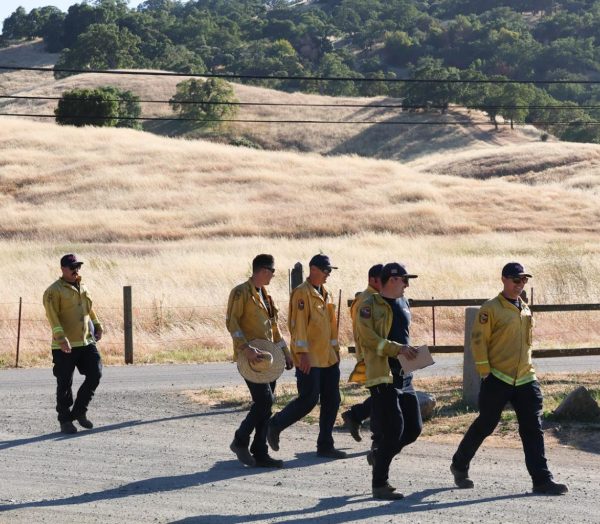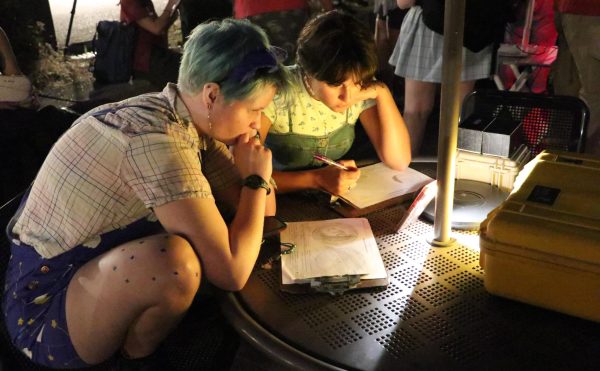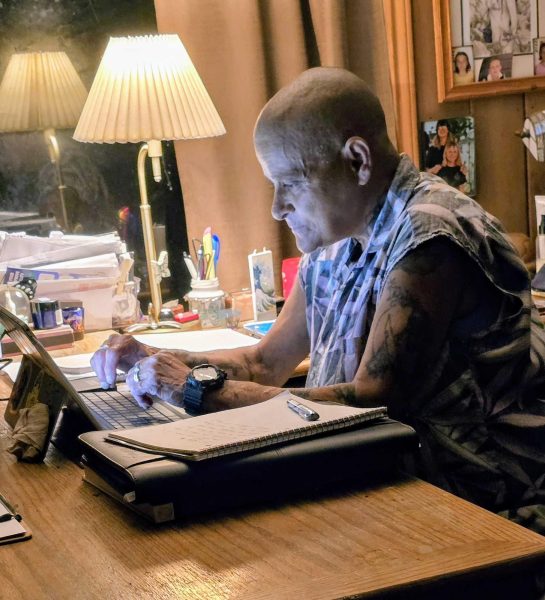Mainstream coverage of Dakota Access Pipeline – middle finger to journalistic standards
November 7, 2016
North Dakota – where once there was only dirt, sunflower seeds and barley – has become the hottest destination in the country with millions checking-in on Facebook to Standing Rock, North Dakota, while simultaneously sitting in comfortable armchairs, with more than a thousand miles separating them from the scene on the ground. While this form of informative slacktivism was but another example of social media’s reactionary culture that we have come to accept, it has been immensely disheartening to watch the well-accepted, mainstream media indulge in the same reactionary, superficial behavior.
For weeks, Democracy Now and other alternative on-site coverage publicized the protests prior to any semblance of meaningful discussion from the media conglomerates. As journalists, documentary crews, Native-Americans and their allies were arrested left and right, cable networks remained focused on coverage of the Bundy crew, an armed white militia that occupied federal lands in Oregon.
While it is not reasonable to expect all works of journalism to aspire to the levels of Woodward and Bernstein’s investigation of Watergate, prior to the massive corporate-influenced consolidation of the media, there was once a standard of investigative journalism which sought the why and the how rather than just the what.
Once social media was positively spilling with trending hashtags and overwhelming support of the cause, little attention was given to how the situation came to be or why particular parties are acting the way they are. Instead there is a determined focus on stories such as how friends and family are checking in on Facebook.
There is an aspect of the current dynamic that is being glossed over, steam-rolled by a media machine looking for agitation and violent protestors where they will only find peaceful water protectors at odds with tanks and armed police; one officer even went so far as to warn the protestors that they should not shoot with their bows and arrows, a statement showing a profound lack of understanding.
Aside from the shallow narrative propagated by the corporate media, there is also a startling lack of timeliness. While Democracy Now featured boots on the ground, extensive coverage of the livid yet peaceful protestors as early as mid August with an extensive series which inevitably resulted in the arrest of one of its own reporters, CNN’s sparse coverage of the pipeline is mostly scattered throughout the months of September and October, where it is entirely overshadowed by an extensive diary of every breath that Donald Trump takes, going so far as to feature cable coverage of Trump’s habit of eating fried chicken with a fork.
While it requires a fair bit of generalizing to repeatedly use the term mainstream media, such a term also exists because major networks and websites tend to share similar habits and coverage tendencies. Thus, while CNN may be rotten in this context, one bad apple tends to spoil the rest as well.
According to Nexis News Database, a repository for media coverage, of the three largest broadcast networks, CBS was the only one to feature any coverage of the Dakota access pipeline prior to Sept. 8, nearly a month after the original transpirings occurred. Yet, the attempts of journalism were no more than a gesture which amounted to 48 words that were read at 4 a.m.
Thousands of protests, from native tribes from all across the country, marched in unity against not only a pipeline designed to run through sacred lands, but also an aged ideology which expresses utilitarian benefit even at the cost of continued use of fossil fuels and an acceptance of the possible desecration of the region’s most abundant source of water. This is a fight against a disregard for an entire people which this country has been mistreated, killed, enslaved and cheated for centuries.
The new script for corporate media has already been written, bought and tested, and thus media pundits will begin to voice their uninformed opinions on the matter if and when there is a peaceful resolution reached, or if, in by some unfortunate circumstances, someone is killed. It is the nature of the modern, reactionary style of sensationalist, corporate media.

























